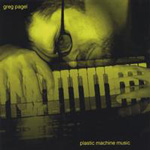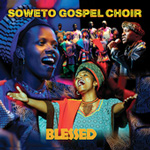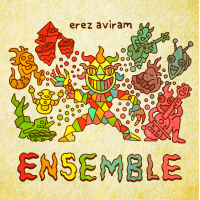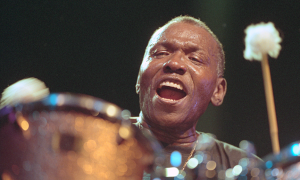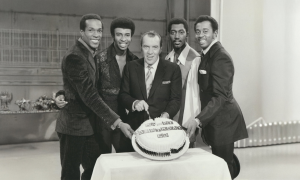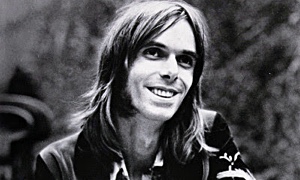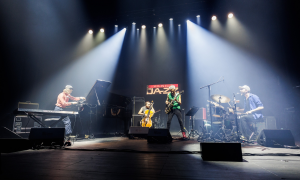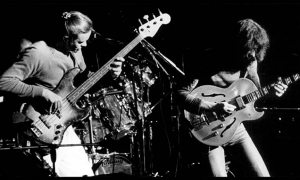Home » Jazz Articles » Film Review » My Name Is Albert Ayler
My Name Is Albert Ayler
A lot of the film footage of Albert in performance was taken from his late sixties rhythm and blues period
 My Name Is Albert Ayler
My Name Is Albert AylerDirected by Kasper Collin
Northwest Film Forum
Earshot Jazz Festival
Seattle, Washington
There has finally been a film made about Albert Ayler, one of the most innovative saxophonists in history. An independent film by Swedish director Kasper Collin, it features the only known film footage of Albert that is in existence. Through the use of audio interviews with Albert himself recorded between 1963-1970, recent interviews conducted by Collin with Albert's father, Edward Ayler, and his younger brother, trumpeter Donald Ayler, as well as with musicians and associates including drummer Sunny Murray, bassist Gary Peacock, violinist Michael Sampson, and singer and former girlfriend Mary Maria, Collin documents Albert's life from the time that he started playing alto saxophone as a young child in Cleveland, Ohio, to his death in New York in 1970.
Good looking, well dressed and articulate, Albert studied the oboe in high school then changed his focus to saxophone so he could pursue playing with rhythm and blues groups. After graduating from high school he attended college but, due to lack of available funds, left college to join the Army where he played with the military band. After leaving the Army in 1961 he returned to Cleveland where he focused on more free, unconventional approaches to his playing.
In 1962 he went to Sweden because, according to his brother Donald, he wanted to be accepted as an artist. According to Collin, Albert wasn't popular at all in Sweden. In fact, he was kicked out of clubs because of the way that he played. Sunny Murray told a story about being in Sweden in 1963 while playing with pianist Cecil Taylor's group when Albert asked to perform with them. Taylor immediately declined, but against his wishes, while Taylor was on the bandstand playing a solo, Murray and saxophonist Jimmy Lyons gave Albert the cues to go ahead and start playing. Albert's sound was so raucous and so intense that Taylor was taken aback and he actually stopped playing and allowed Albert to continue.
There was the innate tendency toward music and, as Donald Ayler put it, playing it with love. Gary Peacock told a story about John Coltrane inviting Albert's group—which featured Peacock, and Murray —onto the bandstand to play with him. When they started to play, Coltrane did a double take, laughed and said, "You guys have got it. You go ahead and play."
After returning from Sweden, Albert taught Donald to play trumpet so that Donald could move to New York to play music with him. This was against the wishes of their mother who did not want either of her sons involved in the music scene. When Donald first began studying, he practiced nine hours a day for three months straight, some days not even changing out of his pajamas.
Violinist Michael Sampson, who performed on "Slug's Saloon," described how the musicians lived in intense, abject poverty in New York. The daily routine was to get up, not eat breakfast because there was virtually no money to be had, and walk the streets looking for places to play. Donald stated that at one point, when the musicians were in dire straits financially with no money to eat, he contacted John Coltrane who gave Albert $50 and Donald $27.50, which was all of the money Coltrane had in his pocket at the time. When Albert finally wanted to change his musical direction, Donald, being very uncomfortable going out on his own, became upset, destroyed his trumpet, and threw it away.
A lot of the film footage of Albert in performance was taken from his late sixties rhythm and blues period that included compositions with himself and girlfriend Mary Maria performing on vocals. Albert and Mary were very close, so much so that friends and fellow musicians complained that she was isolating him and controlling his career. Albert disclosed to her that he felt responsible for the hardships that he believed his family was facing. According to Mary, he believed that the only way that his family could be free of those hardships was if he was to die. Sadly, after going missing for several days, his body was found in New York's East River, Albert having apparently drowned. There was no evidence to support otherwise even though it has been speculated that his death could have been the result of some kind of wrongdoing. Simply stated, the sadness in the eyes of Albert's father and brother during their interviews for this film tells the story quite effectively.
My Name Is Albert Ayler was premiered in North America at the Earshot Jazz Festival in Seattle as part of a tour that director Kasper Collin was doing to support it. There were also question and answer sessions with Collin at the conclusion of each showing. For those devoted to listening or to performing jazz, in particular free jazz or improvised music, heartbreaking as it is, this film is a rarity and not to be missed. Details about the film can be viewed at www.mynameisalbertayler.com.
Suggested Listening:
Spiritual Unity
The Hilversum Session
New York Eye and Ear Control
Slug's Saloon Vol. 1 & 2
Tags
PREVIOUS / NEXT
Support All About Jazz
 All About Jazz has been a pillar of jazz since 1995, championing it as an art form and, more importantly, supporting the musicians who make it. Our enduring commitment has made "AAJ" one of the most culturally important websites of its kind, read by hundreds of thousands of fans, musicians and industry figures every month.
All About Jazz has been a pillar of jazz since 1995, championing it as an art form and, more importantly, supporting the musicians who make it. Our enduring commitment has made "AAJ" one of the most culturally important websites of its kind, read by hundreds of thousands of fans, musicians and industry figures every month.


